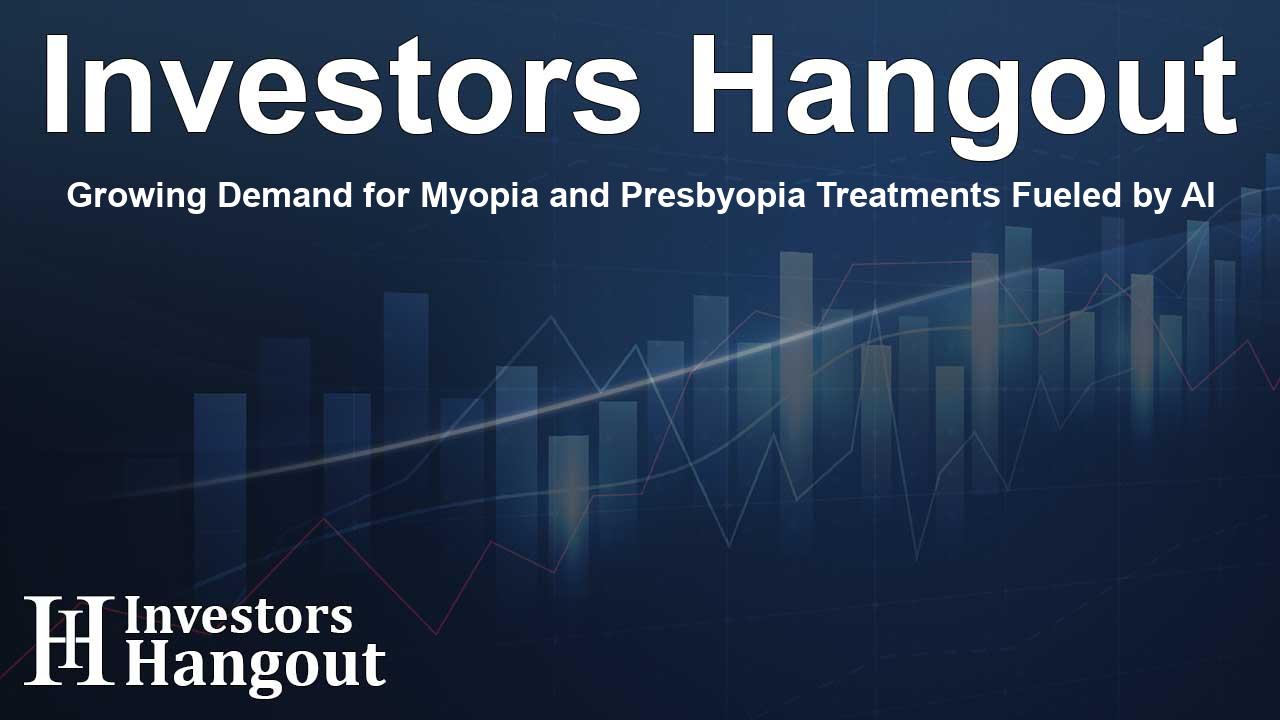Growing Demand for Myopia and Presbyopia Treatments Fueled by AI

Understanding the Myopia and Presbyopia Treatment Market
The myopia and presbyopia treatment market is on the verge of substantial growth as the demand for effective solutions rises. The global estimates suggest an anticipated growth of USD 9.76 billion during the period from 2024 to 2028, showcasing a considerable compound annual growth rate (CAGR) of 9.05%. This growth is largely driven by the increasing prevalence of vision impairment associated with these conditions, as well as significant investments in the development of advanced treatment technologies.
Drivers of Market Growth
The surge in demand for treatment is primarily attributed to the imbalance between the rising population affected by myopia and presbyopia and the innovative response from major market players. For instance, recent product launches aimed at improving patient experience have caught the attention of the global healthcare community. Companies like Johnson & Johnson debuted advanced products including the ACUVUE OASYS MAX series, which is designed for sustained comfort and visual clarity. Innovations such as these are not only appealing but also critical for attracting a growing patient demographic.
The Role of AI in Treatment Evolution
Artificial intelligence (AI) plays a pivotal role in shaping treatment approaches and market strategies. By analyzing vast data sets, AI can identify patterns and trends, leading to quicker responses to changes in consumer needs and preferences. The use of AI also streamlines product development processes, making it easier for companies to introduce effective solutions in a rapidly evolving market. As healthcare continues to embrace technological advancements, AI is expected to redefine the possibilities within vision care.
Challenges Facing the Market
Despite the positive outlook, the market encounters notable challenges, primarily due to the high costs associated with treatments. Many patients find that options such as specialized lenses and surgeries are financially prohibitive. This limitation affects early intervention, discouraging patients from seeking essential care and prolonging their struggles with vision impairment. Additionally, this financial barrier complicates the landscape for healthcare providers who may feel restricted in their ability to invest in innovative treatments.
Innovative Treatment Options
The diversity of treatment options is continuously expanding to meet the needs of varying patient demographics. Apart from traditional glasses and contact lenses, surgical choices have gained popularity. Procedures such as LASIK, conductive keratoplasty, and phacoemulsification are common, providing patients with long-term solutions to their vision problems. Furthermore, product developments such as corneal inlays and intraocular lenses provide alternatives that are less invasive and tailored to individual patient needs.
Market Segmentation Insights
The myopia and presbyopia treatment market can be segmented into several pivotal areas:
- Type:
- Myopia Treatment
- Presbyopia Treatment
- Product:
- Lenses
- Surgical Options
- Medications
- Geographic Regions:
- Asia
- North America
- Europe
- Rest of World
This segmentation aids stakeholders in understanding market dynamics better and in making strategic decisions to capitalize on growth opportunities.
Conclusion and Future Outlook
As research continues and innovation within myopia and presbyopia treatments evolves, it is paramount for industry players to stay attuned to the changing landscape. Exploring advancements like gene therapy, stem cell treatments, and other high-tech solutions will likely play a key role in addressing the primary challenges faced by patients today. The synergy between AI and healthcare is set to accelerate market growth, ultimately aiming for improved outcomes for those suffering from these prevalent vision conditions.
Frequently Asked Questions
What is driving the growth of the myopia and presbyopia treatment market?
The market growth is primarily driven by the increasing prevalence of these vision impairments and the introduction of innovative products aimed at improving patient care.
How is AI influencing myopia and presbyopia treatments?
AI is significantly impacting the development and analysis of treatment options, allowing for quicker adaptations to market trends and efficiency in product introduction.
What are common challenges in accessing vision treatment?
High treatment costs pose significant barriers, limiting access to advanced treatment options for many individuals, and often discouraging early intervention.
What innovative treatments are available for myopia?
Innovative options include specialized lenses, refractive surgeries like LASIK, and new technologies such as orthokeratology to slow myopia progression in children.
What role do emerging technologies play in vision care?
Emerging technologies, including stem cell therapy and advanced imaging systems, are essential for developing durable solutions for vision loss and enhancing patient experiences.
About The Author
Contact Owen Jenkins privately here. Or send an email with ATTN: Owen Jenkins as the subject to contact@investorshangout.com.
About Investors Hangout
Investors Hangout is a leading online stock forum for financial discussion and learning, offering a wide range of free tools and resources. It draws in traders of all levels, who exchange market knowledge, investigate trading tactics, and keep an eye on industry developments in real time. Featuring financial articles, stock message boards, quotes, charts, company profiles, and live news updates. Through cooperative learning and a wealth of informational resources, it helps users from novices creating their first portfolios to experts honing their techniques. Join Investors Hangout today: https://investorshangout.com/
The content of this article is based on factual, publicly available information and does not represent legal, financial, or investment advice. Investors Hangout does not offer financial advice, and the author is not a licensed financial advisor. Consult a qualified advisor before making any financial or investment decisions based on this article. This article should not be considered advice to purchase, sell, or hold any securities or other investments. If any of the material provided here is inaccurate, please contact us for corrections.
